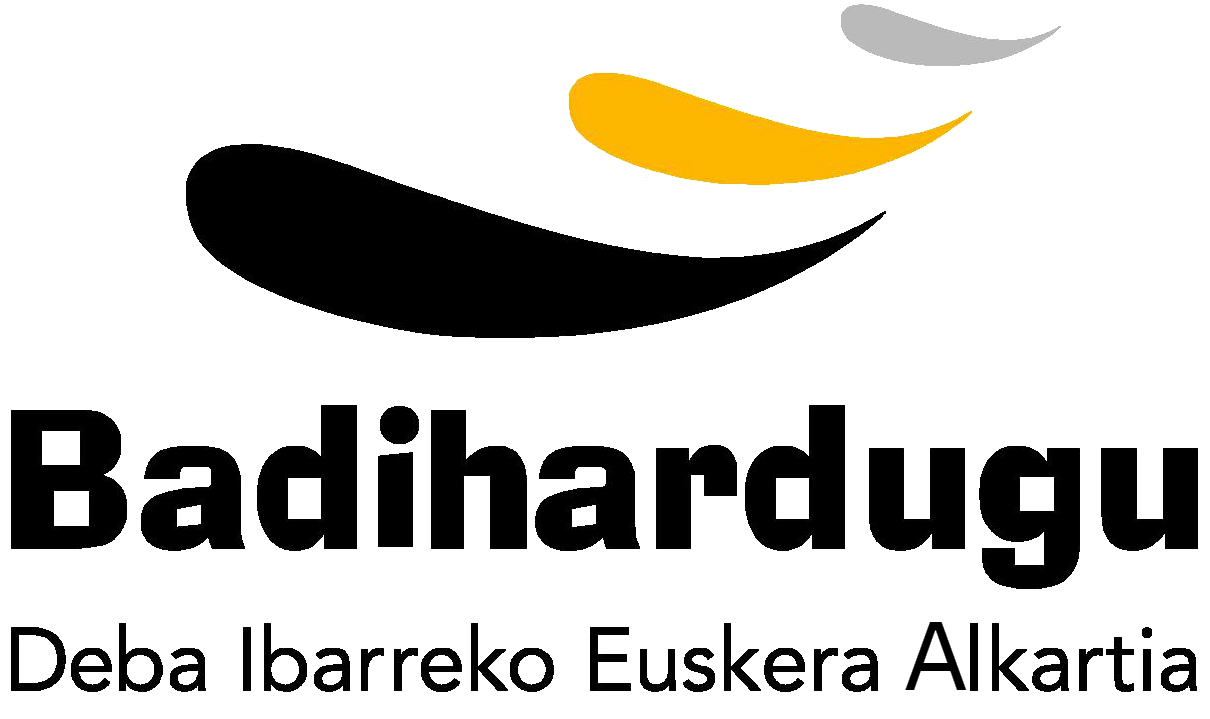ARNAUT OIHENART
1592-1667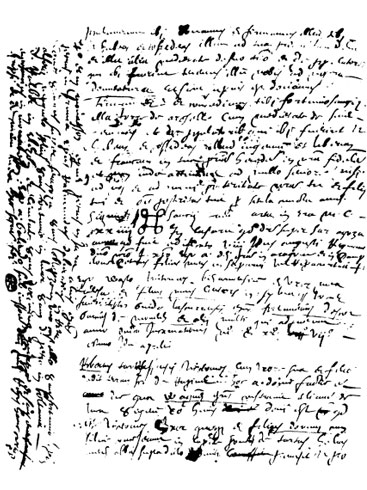
Arnaut Oihenart's manuscript
Arnaut Oihenart, who hailed from the Basque region of Zuberoa (in French, Pays de Soule), presented his view on Basque dialects for the first time in the book Notitia Utriusque Vasconiae. We do not know how much direct knowledge Oihenart had of the spoken Basque of different regions, but there is evidence that he acquainted himself with written texts from different areas (see Oihenart 1665 [1967]). In his work, he accurately described his own Zuberoan (or Souletin) dialect (Oihenart 1656).
Oihenart’s classification was groundbreaking. He did not equate the boundaries of Basque dialects with those of political entities, as many of his contemporaries did (see, for example, Axular 1643:17). Instead, he related them to ancient lineages, known from the writings of Roman authors. He thus distinguished four Basque dialects, corresponding to four tribes or ethnic groups mentioned in the classical sources (Oihenart 1656 [1971]: 353):
- a. The dialect of the Aquitanians, spoken in the Northern Basque Country, in Gaul.
- b. The dialect of the Vascones, spoken in Navarre.
- c. The dialect of the Bardulians, spoken in Gipuzkoa and Araba.
- d. The dialect of the Autrigones, spoken in Bizkaia.
In Oihenart’s view, the existence of clearly identifiable Basque dialects was a very old phenomenon. The dialects of Basque that were spoken in his days were very ancient, previous to the Roman conquest of the area. They dated from the era of the pre-Roman tribes and lineages. Oihenart was the first author to publicize this opinion on the ancient origin of the Basque dialects, which has persisted almost up to our days.
We can say that, in seeking a direct identification between Basque dialects and pre-Roman tribes, Oihenart disregarded linguistic facts that were known to him. This is clear in his decision to include all of the varieties spoken in the Northern Basque Country within a single dialect. According to reports from Roman times, there was only one ethno-political entity in that area, and, therefore, holding to this stance, the dialect from that entire area had to be only one as well. That viewpoint, however, was not at all correct: Zuberoan Basque had a distinct identity by the 17th century, and was clearly different from the varieties of Lapurdi (Labourd) and Nafarroa Beherea (Basse Navarre or Low Navarre).
We have not mentioned what criteria Oihenart used in order to classify dialects. This is because he was not at all explicit in this respect. He listed, nevertheless, a few features that characterize some Basque dialects:
- a. The vowel ü (as in French tu), used only in some areas of Zuberoa and Low Navarre
- b. Strengthened pronouns like nihaur ‘I myself’ in the East and neuror in the West.
- c. The Bizkaian demonstrative a ‘that’ (general “hura”)
MANUEL LARRAMENDI
1690-1766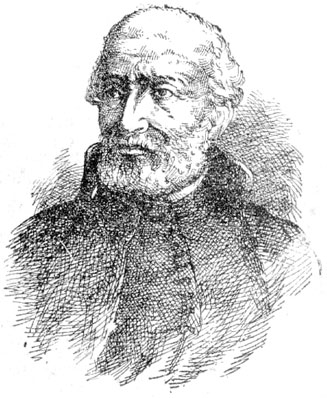
Portrait of Manuel Larramendi
In the following century, Manuel de Larramendi made a second attempt at classifying Basque dialects. He provided substantial information on dialectal diversity in his grammar El impossible vencido [The impossible conquered] published in 1729, and in addition he included many details of dialectal variation in the foreword of his 1745 dictionary, as well as in his book Corografía de Guipúzcoa (published in 1969).
Larramendi distinguished three Basque dialects (Larramendi 1729: 12):
- a. Bizkaian
- b. Gipuzkoan
- c. Navarrese-Lapurdian
Larramendi included the Basque of Araba within the Bizkaian dialect, although he also pointed out a number of differences between these two areas. In his view, the Basque of Araba was a mixed dialect. As he noticed in Corografía de Guipúzcoa, there were also differences within his Navarrese-Lapurdian dialect. For him Zuberoan and Navarrese were the most different dialects with respect to Gipuzkoan.
Behind Larramendi’s classification one can see the influence of notions about Basque history that had been formulated by previous historians (Garibai, Marca and Moret); namely, the idea that the Vascones, who in Roman times inhabited Navarre, crossed the Pyrenees and made the Northern Basque Country theirs (Larramendi 1745: LXXV). Therefore, since the Vascones brought their Basque language to the area north of the Pyrenees, it must be the case that the same dialect was spoken in Navarre and in the Northern Basque Country. The fact is, however, that contrary to Larramendi’s view, the Basque spoken in that wide area in the 18th century did not show any dialectal unity whatsoever.
Like Oihenart, Larramendi also considered the Basque dialects to have a very ancient origin. The classical Greek and Roman geographers and historians reported much linguistic diversity in Hispania. This was incompatible with an 18th century opinion, according to which Basque was spoken all over the Iberian Peninsula in pre-Roman times. For Larramendi, who was a proponent of this view, the languages to which the classical authors made reference were in fact dialects of the Basque language (Larramendi 1745: CLVIII and 1969: 280). There is, of course, absolutely no linguistic evidence for this position. Larramendi wanted to make only one point: that Basque was the only language spoken in ancient Spain. Testimonies from the Roman era, though, challenge this view: They tell us that there were many regions and languages in the Iberian Peninsula.
On the other hand, Larramendi noticed that the boundaries of the Basque provinces and the dialectal borders did not match. Taking Gipuzkoa as an example, he pointed out that Bizkaian Basque was spoken in the Deba Valley, and that in the Gipuzkoan towns of Oiartzun, Hondarribia, and Irun, the proximity of Lapurdian Basque was noticeable.
Larramendi scrutinized books from all over the Basque Country, and moreover, he collected oral Basque samples. He traveled, at least, throughout Bizkaia, Gipuzkoa and Lapurdi. In his descriptive and classificatory work he prioritized the study of verbs. In Larramendi’s opinion, verbs were the richest component of the Basque language. This started a long-lived scholarly tradition. The study of verbal morphology has played a central role in Basque dialectology and more generally in Basque Linguistics. However, Larramendi also considered the rest of the components of the language, and we can find much information on other aspects of dialectal diversity in his writings (see Pagola 1991). Larramendi was also the first scholar to devote attention to the Basque accentual system, providing detailed and accurate information on the accentuation of words in the varieties of the western and central regions (Larramendi 1729: 336-372).
LOUIS-LUCIEN BONAPARTE
1813-1891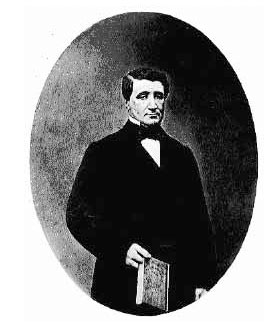
Photograph of Louis-Lucien Bonaparte
Even though Oihenart and Larramendi are important precursors, modern research on Basque dialectology actually starts with the work of Louis-Lucien Bonaparte. A French Prince (he was a nephew of Napoleon), Bonaparte was born in England, where he lived most of his life, and died in Italy, where he also spent part of his youth. Nevertheless, he traveled widely in the Basque Country and managed to become proficient in the Basque language. For his classification of Basque dialects, he analyzed not only written texts, but also oral evidence. He was, indeed, the first scholar to get to know and to analyze the language of the whole Basque-speaking territory. He made five trips to the Basque Country. In this research, he was assisted by multiple Basque-speaking correspondents, some of whom he brought to London to work with him.
Bonaparte was not concerned with the study of the origin of the dialects of the Basque language and did not express any opinion regarding whether the dialects he studied were ancient or recent. His main objective was to produce a complete map showing the dialects and local varieties spoken at the time.
Bonaparte distinguished eight major Basque dialects, which he placed in three main groups (Bonaparte 1863, 1869): a) The Western or Bizkaian dialect; b) the Central dialect group, including the Gipuzkoan, Northern High Navarrese, Southern High Navarrese and Lapurdian dialects; and c) the Eastern dialect group, including Zuberoan, Eastern Low Navarrese and Western Low Navarrese. Within those eight dialects, he distinguished 25 varieties and 36 sub-varieties:
- 1. Bizkaian Basque: With three subdialects and nine varieties. Western Bizkaian variety (including the varieties of Gernika, Bermeo, Plentzia, Arratia, Orozko, Arrigorriaga and Otxandio), Eastern Bizkaian variety and Bizkaian variety of Gipuzkoa (including the varieties of Bergara and Leintz-Gatzaga).
- 2. Gipuzkoan Basque: With three subdialects and five varieties: Northern Gipuzkoan (including the varieties of Hernani, Tolosa and Azpeitia), Southern Gipuzkoan and Gipuzkoan subdialect of Navarre (including the varieties of the Burunda Valley and Etxarri Aranaz).
- 3. Northern High Navarrese Basque: With six subdialects: Ultzama, Baztan, Bortziriak, Arakil, Araitz and the Northern High Navarrese subdialect of Gipuzkoa.
- 4. Lapurdian Basque: Two subdialects and three varieties: “Pure” (varieties of Sara, Ainhoa and Donibane Lohizune) and “Mixed” (of the Arrangoitze area).
- 5. Southern High Navarrese Basque: Three subdialects and eight varieties: Subdialect spoken to the east of Iruña-Pamplona (including the varieties of Eguesibar, Olaibar, Artzibar, Erroibar and Auritz); subdialect of Izarbeibar and subdialect to the west of Iruña-Pamplona (including the varieties of Oltza, Zizur and Gulibar).
- 6. Zuberoan Basque: With two subdialects and three varieties: “Pure” (of Zuberoa) and Roncalese (spoken in Roncal/Erronkari, Navarre, including the varieties of Bidankoze, Urzainki and Uztarroze).
- 7. Eastern Low Navarrese Basque: With three subdialets and six varieties: Garazi-Amikuze (including the varieties of Garazi, Amikuze, Bardoze and Arberoa), Adour (including the varieties of Beskoitze and Urketa) and Salazarese (spoken in Salazar/Zaraitzu, in Navarre).
- 8. Western Low Navarrese Basque: With three subdialects and two varieties: Baigorri, Western Low Navarrese of Lapurdi (including the varieties of Uztaritze and Lekorne) and the subdialect of the Aezkoa Valley, in Navarre.
Next, we will consider the background behind this classification.
BONAPARTE’S CRITERIA
In Bonaparte’s work we may distinguish two main periods, before and after 1864. Before that year, Bonaparte did not consider many dialectal features or isoglosses to establish his classification and, for the most part, he followed the path blazed by those who came before him. A dialectally variable feature he took from Larramendi is the form of the present tense of the auxiliary verb edun ‘to have’: dut/det/dot ‘I have’. From Mogel and Añibarro, on the other hand, he adopted, as a feature for classificatory purposes, the different pronunciations or “euphonies” of sequences of vowels (see Mogel 1803: IV-V and note 20 of the preface of Peru Abarca). Closer in time to Bonaparte, another Bizkaian writer, Juan Mateo Zabala, also used those vowel euphonies to describe the speech of different areas within Bizkaia (Zabala 1848: 54-55).
While Bonaparte found those few features to be sufficient for the purpose of classifying the dialects, subdialects and varieties spoken in Bizkaia and Gipuzkoa, it became clear to him that they were not quite enough for the classification of the varieties of Basque spoken in the Northern Basque Country and Navarre. In that vast area, the variant dut ‘I have’ was used everywhere and the vowel euphonies did not have a meaningful geographical distribution. To overcome that problem, he had to look for more and more rigorous measures of dialectal diversity, and that is when Bonaparte made his most important contribution to Basque dialectology: He collected a larger and more precise amount of data on the speech of Navarre, Low Navarre and Lapurdi. He paid less attention to the Western and Zuberoan dialects, as they were more clearly distinguishable from the rest. Therefore, from 1864 on, Bonaparte used a greater number of isoglosses in his dialectological work. Nevertheless, the fact is that he did not clearly specify and explain which features he had selected when he published his maps. The information is mainly scattered in his articles and in letters sent to his colleagues. As a result of that, Bonaparte’s criteria for dialectal classification have been mostly hidden from us until very recently. These are the features that Bonaparte chose for his classification:
- a. Phonology. Bonaparte took six features into account: The vowel ü; the existence of nasal vowels; the loss of intervocalic -i- (behia > bea ‘cow’); the presence of aspiration; the different pronunciation of word-initial *j (yan/xan/jan ‘to eat’); and the voiced sibilants of Zuberoan.
- b. Noun Morphology. He considered four aspects: the shape of the ergative plural suffix -ak/-ek (gizonak jan dute/gizonek jan dute ‘the men have eaten it’); the form of the animate inessive case -gan/baitan (jaunagan/jauna baitan ‘in the lord’); the choice of suffix for the comitative case -gaz/-kin/-ki (jaunagaz/jaunarekin/jaunareki ‘with the lord’ ); and the presence of an initial consonant in the demonstratives (hau/gau/kaur ‘this’).
- c. Verbal Morphology. He chose five variables for classificatory purposes: the vowel in the stem of the auxiliary verb izan ‘to be’ in the present tense (naiz/nas/niz ‘I am’ and gara/gera/gira ‘we are’); the vowel in the stem of the present tense of the auxiliary verb edun (dut/det/dot ‘I have’); the existence of “allocutive” verbal forms(1) with the pronouns zu and xu ‘you, singular’ (e.g. joan duzu ~ joan duxu ‘s/he has gone’, instead of joan da, when the addressee is given the treatment of zu ‘2nd person singular, polite, formal’ or xu ‘2nd person singular, polite, familiar’; the existence of a contrast between the uninflected forms ukhan ‘to have’ and izan ‘to be’ (vs only izan ‘to be or to have’); and the omission of final -n in the past tense (ikusi nuen> ikusi nue ‘I saw it’).
- d. Syntax. Bonarparte selected two features: the causative prefix bait- (zeren ona baita ‘because it is good’); and the use of the interrogative suffix -a (egin dia? ‘did s/he do it?’ vs egin al du?).
- e. Lexicon. Bonaparte also mentioned a few lexical items for which there is geographical variation: domeka/igande ‘Sunday’, bekoki/kopeta/belhar/boronde ‘forehead’, and a few others. He also took into account the distribution of variants of the same lexeme, especially the pair esan/erran ‘to say’.
-----------------------------------------
(1) Allocutive verbal forms include a morphological index for the addressee. Throughout the Basque Country, allocutive forms are used when the addressee is given the informal or familiar pronoun hi ‘thou’; e.g. joan da ‘s/he has gone, unmarked’, becomes joan duk in informal treatment when the addressee is male and joan dun with a female interlocutor who is being addressed with the familiar pronoun. In some Eastern regions, allocutivity has been extended to treatment with the polite pronoun zu, and a pronoun of intermediate formality, xu, which also requires allocutive marking on the verb, has also arisen. Elsewhere, unmarked forms (without allocutivity) are used with addressees treated as zu. See https://en.wikipedia.org/wiki/Allocutive_agreement
SOME NOTES ON BONAPARTE’S CRITERIA
First of all, it is important to highlight that Bonaparte made a substantial effort to learn Basque and about variation in Basque. He studied the language extensively and in depth, and to produce his classification, he took into account innovations and specific choices from every dialect. Considering this, he did an admirable job.
Nevertheless, it is also clear that he made use of only a very small number of features for his classification of dialects and for deciding whether to include a particular local variety with one or another of two neighboring dialects. Sometimes these decisions were based on a single feature. Here is, for example, the classification he adopted in the report Observations sur le formulaire de prône (Bonaparte 1867: 7):
- 1. Gipuzkoan, the dialect that has forms like det ‘I have’.
- 2. Bizkaian, the dialect that has forms like dot.
- 3. Navarrese-Lapurdian, the dialect with forms like dut ‘I have’ and naiz ‘I am’.
- 4. Lower Navarrese, the dialect with the form niz ‘I am’ and lacking allocutive forms for zu ‘you-sg polite’ and xu ‘you-sg polite-familiar’.
- 5. Navarrese-Zuberoan, the dialect with allocutive forms for zu and xu.
Basing the analysis on ony one or two features led to very questionable results. On the one hand, some local varieties that were very similar were classified in different groups, just because they did not match in one of the features that were selected. On the other hand, varieties that were quite different overall could end up in the same group if they agreed in one feature. Focusing on a small number of features also led to excessive fragmentation. Sometimes varieties that shared many features were separated from each other due to a difference in one of the features listed above.
Obviously, Bonaparte had no major problems concerning the Western area and Zuberoa, because the geographical boundaries of the Western and the Zuberoan dialects are clear-cut. The difficulties arise in Navarre, Lapurdi and Low Navarre. The Basque of Lapurdi and Low Navarre is relatively homogeneous, yet Bonaparte distinguished three dialects there, including eight subdialects and eleven varieties within this area. He based this fragmentation on five features (Bonaparte 1867:2-5):
- a. The choice between naiz and niz ‘I am’.
- b. The result of sequences of vowels arising from the combination of the vowel u with either a or e: buru + a > burua/buruya/buria ‘the head’, du + -en > duen/duyen/dien ‘that s/he has it’.
- c. The use of izan as an uninflected auxiliary with both intransitive and transitive verbs vs the existence of a distinction between izan (intransitive auxiliary) and ukhan (transitive auxiliary): ikhusi izan dut/ikhusi ukan dut ‘I have seen it’.
- d. The presence or absence of the question suffix -a: eginen duk?/eginen duka? ‘will you do it? (familiar, masculine)’.
- e. The existence or not of allocutive forms for zu ‘you, singular polite’ and xu ‘you, singular, polite-familiar’: bizi naiz/ bizi nuzu/ bizi nuxu ‘I live’.
Bonaparte used these criteria very strictly for the classification of speech varieties. I will mention two examples showing the consequences of his procedure:
- 1. Bonaparte distinguished three subdialects within Western Low Navarrese; the variety spoken in Lapurdi being one of them. The only reason to differentiate this subdialect from the other two was the following: The insertion of -y- when /u+a, u+ e/ were combined, as in buru +a becoming buruya ‘the head’. This sole characteristic was enough to give this form of speech the status of a “subdialect”.
- 2. Within the Lapurdi subdialect of Western Low Navarrese, Bonaparte recognized two varieties: The variety of Lekorne and the variety of Uztaritz. He had two reasons for this: In the speech of Lekorne, the interrogative suffix -a was used and izan and ukhan were distinguished; but not in the speech of Uztaritz.
If we analyze how Bonaparte decided where to place dialectal boundaries in other cases, we find the same sort of questionable decisions. In order to draw the boundaries between the Bizkaian, Gipuzkoan and Navarrese dialects, for instance, he only focused on one characteristic: the conjugation of the transitive auxiliary *edun ‘to have’. Thus, the speech of Elgoibar (in Gipuzkoa) was deemed to belong to the Bizkaian dialect, as dot ‘I have it’ was used there, instead of the Gipuzkoan form det. The speech of Lezo (in Gipuzkoa) was considered to be Navarrese because dut was used in this town, and finally, the speech of Etxarri Aranaz (in Navarre) was Gipuzkoan for Bonaparte because of the use of det. In spite of this, it is rather obvious, though, that the speech of Lezo is much closer to the Gipuzkoan dialect than to High Navarese and that the speech of Etxarri Aranaz is closer to the Navarrese dialect than to the Gizpuzkoan one. In the case of the speech of Elgoibar, it is less clear whether it should be classified as Bizkaian or as Gipuzkoan, since it shares features with both of these dialects, occupying an intermediate position.
Bonaparte’s classification of the speech of the Aezkoa Valley (Navarre) within the Western Low Navarrese dialect is also worth considering in some detail. Bonaparte himself admitted (1867: 3-5) that the speech of Aezkoa did not show most of the innovations found in the Northern Basque Country and, more specifically, in the Western Low Navarrese dialect: the interrogative suffix -a was not used there, neither was the verb ukhan ‘to have’, and in the sequences /u + a, e/, u did not become i, nor was -y- inserted (e.g. burua ‘the head’ was not pronounced either buria or buruya). Furthermore, there was no aspiration. In contrast, as in other High Navarrese varieties, word-initial [∫] was used for *j- (xan ‘to eat’), demonstrative pronouns had word-initial g- (gau ‘this’, for standard hau) and past tense verbs without final -n were used (egon ze ‘s/he was, stayed’, instead of common egon zen). In addition, the speech of Aezkoa made use of two typically High Navarrese lexical variants: fan ‘to go’ (instead of joan) and ekendu ‘to take away’ (instead of kendu). All of this should have been enough to classify Aezkoan squarely within High Navarrese. However, rather surprisingly, Bonaparte included Aezkoan within his Western Low Navarrese dialect instead. The reason for it was the use of the form niz ‘I am’.
In addition to Aezkoan, the varieties of Basque spoken in the Navarrese valleys of Zaraitzu (or Salazar) and Erronkari (or Roncal), were also classified within dialects of the Northern Basque Country: the former within Eastern Low Navarrese and the latter within Zuberoan. Here are Bonaparte’s criteria for this classification:
- a. The use of allocutive forms for xu in Zaraitzu and for zu in Erronkari.
- b. The use of the interrogative suffix -a.
- c. The fact that the stem of the verb izan ‘to be’ in Zaraitzu is -i in the form niz ‘I am’ (standard naiz).
As with dialects, when considering the criteria that Bonaparte used to distinguish subdialects, it is rather difficult to agree with him in many cases. He classified many subidalects according to the “vowel euphonies” that were used. In the Northern Basque Country, as we have mentioned, the results of the combinations of /u +a, e/ were taken into account: burua/buruya/buria ‘the head’. In the case of the Southern Basque Country, the following six euphonies were considered for this purpose:
- a. The change e > i when /e + a, e, o/ were combined: semea/semia ‘the son’.
- b. The change o > u when /o + a, e, o/ were combined: besoa/besua ‘the arm’.
- c. The epenthesis or lack thereof in /i + a, e, o/: mendia/mendiya-mendidxe-mendixa ‘the mountain’.
- d. The epenthesis of -b- in /u + a, e, o/: burua/buruba ‘the head’.
- e. The change a > e after i and u: mendia/mendie ‘the mountain’, burua/burue ‘the head’.
- f. In words ending in -a, whether, when bearing the definite suffix -a, the result was -a, -ea (or -ia, -ie), -á or -ara: /alaba+a/ alaba/alabea-alabia-alabie/al(h)abá/alabara ‘the daughter’.
In the first years of Bonaparte’s research, mainly until 1864, “vowel euphonies” were central to his classification. His collaborator Jose Antonio Uriarte, for example, based his classification of Bizkaian varieties on vowel euphonies ([Ruiz de Larrinaga, ed.] 1957: 331). In the text Langue basque et langues finnoises that Bonaparte published in 1862 these “euphonies” were central, as they were in his unpublished essay from 1868, Phonologie de la langue basque dans tous ses dialectes.
Because of these “euphonies”, for instance, he classified the speech of Mungia, Busturia, Durango, Otxandio (Bizkaia) and Zigoitia (Araba) in the same group. Whereas I do not have direct evidence regarding the speech of Zigoitia, it is hard to agree with Bonaparte’s decision to group together the speech of the Mungia and Durango areas. There are similar euphonies in both areas, but when considering the entirety of the language, these are not only clearly differentiated varieties, but even different subdialects: the speech of Mungia must be placed within the western subdialect of the Western dialect, whereas the speech of Durango is in the eastern subdialect of this same dialect.
Dialects todays

All over Western Europe, and in the Basque Country itself, there have been several important changes in the second half of the twentieth century: travel and communication have indeed revolutionized traditional societies. Thanks to modern transportation, nowadays we can travel to different places often and quickly, and, what is more, our way of life demands it: for work, study, or for a myriad of other reasons, people move from one place to another non-stop, and people from many different places gather in the same location. The church, local festivities, fairs and markets are no longer the main meeting points, as they were some time ago; people move around more and in wider areas. Likewise, due to the mass media, it is not compulsory to leave our own town in order to know about other places and the way the speak there. Thanks to the radio, television and the Internet, we have access to news from distant people and places.
In the case of the Basque Country and the Basque language, two additional events must be highlighted. On the one hand, Basque stopped being only an “oral language” and has spread to different areas of life from which it had been previously excluded: schools, institutions, written literature and media, among others. This, of course, has been a unifying force for the language. Related to that, a unified standard variety was created to be used in those arenas. The foundations of this standard language, which is now deeply ingrained in Basque society, were layed in 1964. This as well has been a unifying force for the language, without a doubt.
These changes have had a direct impact on the Basque language: dialects are closer to each other than they were before; the differences between them have been reduced. On the other hand, the axis of the change has been the Southern part of the Basque Country, particularly Gipuzkoa, and therefore, the speech of this area has been the model to follow for speakers from other regions.
Navarre is a great example of what I mean. Historically, the valleys of the northern part of Navarre were in close contact with the Northern Basque Country and this was reflected in the language. Currently, however, the situation has radically changed; the inhabitants or these valleys are now much more fully integrated within the Southern Basque Country. This has caused a shift in the boundaries of Basque dialects: the speech of the border Navarrese towns of Urdazubi and Zugarramurdi, which Bonaparte included within the Lapurdian dialect, can no longer be consider to belong to this dialect. These border towns have not severed their links with Lapurdi, but their speech is now much more related to Navarrese forms of speech, and in general to the Southern Basque dialects. This is particularly noticeable in the speech of young speakers. The same can be said about the Navarrese valleys of Bortziriak, Bertizarana and Baztan. At the moment, Luzaide is the only border town in Navarre that has a stronger relation to the Northern Basque Country, but the situation is also changing there. In the western counties of Navarre, on the other hand, the closeness to Gipuzkoa is evident. It is very palpable in the Araitz Valley, but also in Larraun, Basaburua and Imotz.
Due to all these changes, we may propose that currently there are five Basque dialects:
- a. The Western dialect, spoken in Bizkaia, Aramaio (Araba) and most of the Deba Valley of Gipuzkoa.
- b. The Central dialect, spoken in most of Gipuzkoa and in some western counties of Navarre (Araitz, and with some differences, in Larraun, Basaburua and Imotz as well).
- c. The Navarrese dialect, spoken in most of Navarre.
- d. The Navarrese-Lapurdian dialect, spoken in Lapurdi, Low Navarre, in the (High) Navarrese valley of Luzaide and in the northwestern area of Zuberoa.
- e. The Zuberoan (or Souletin) dialect, spoken in most of Zuberoa and in Eskiula (Béarn).
Apart from the change in dialectal boundaries from Bonaparte’s time, another concept must be introduced in Basque dialectology: the existence of transitional varieties. That is, there are some local varieties that cannot be placed in a specific group, due to the fact that they share features with more than one major dialect. In these areas one may speak of “overlap” between dialects. These are the most relevant transitional varieties:
- 1. The speech of the northern part of the Deba Valley (Elgoibar, Mendaro and Mutriku), which shares features with the Western and Central dialects.
- 2. The speech of Burunda, which linguistically links the Western, Central and Navarrese dialects.
- 3. The speech of northeastern Gipuzkoa (from Errenteria to Irun), which links the Central, Navarrese and Navarrese-Lapurdian dialects. The Navarrese town of Arano is also in this area.
- 4. The speech of western Navarre (Araitz, Larraun, Basaburua and Imotz), which forms a bridge between the Gipuzkoan and Navarrese dialects.
- 5. The speech of Baztan and the region of Urdazubi-Zugarramurdi, which establishes a link between the Navarrese and Navarrese-Lapurdian dialects.
- 6. The speech of the Aezkoa Valley, which links the Navarrese and Navarrese-Labourdin dialects.
- 7. The speech of Amikuze, which serves as transition between the Navarrese-Lapurdian and the Zuberoan dialects.
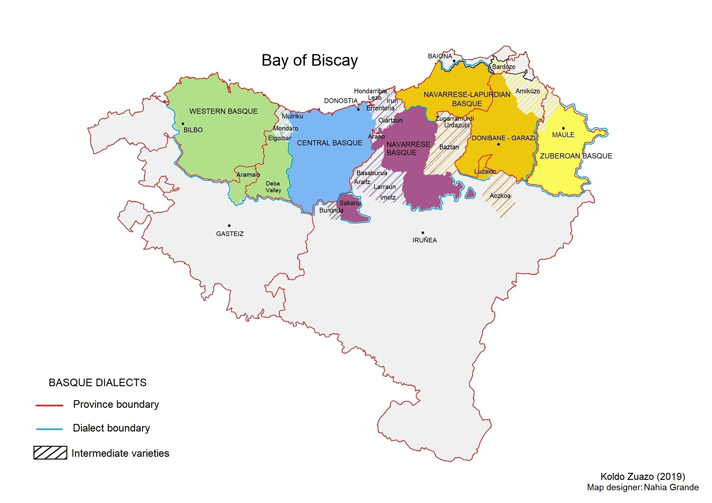
Bibliography
AXULAR [Pedro Agerre].
- 1643. Guero. Bordele: G. Milanges.
BONAPARTE, Louis-Lucien.
- 1862. Langue basque et langues finnoises. Londres.
- 1863. Carte des sept provinces basques, montrant la délimitation actuelle de l'euscara et sa division en dialectes, sous-dialectes et variétés. Londres.
- 1867. Observations sur le formulaire de prône conservé naguère dans l'église d'Arbonne. Baiona: Lamaignère.
- Phonologie de la langue basque dans tous ses dialectes [unpublished essay around 1868].
- 1869. Le verbe basque en tableaux. Reprinted [J. A. Arana Martija, eds.] Opera omnia vasconice (I): 175-442. Bilbo: Euskaltzaindia, 1991.
LARRAMENDI, Manuel.
- 1729. El impossible vencido. Arte de la Lengua Bascongada. Facsimile. Donostia: Hordago, 1979.
- 1745. Diccionario trilingüe del castellano, bascuence y latín (2 issues). Donostia: Bartolomé Riesgo Montero.
- 1969. Corografía o descripción general de la Muy Noble y Muy Leal Provincia de Guipúzcoa. [J. I. Telletxea Idigoras, eds.] Donostia: Sociedad Guipuzcoana de Ediciones y Publicaciones.
MOGEL, Juan Antonio.
- 1803. Confesino ona edo ceimbat gauzac lagundu biar deutseen Confesinuari ondo eguiña izateco. Gasteiz.
- Peru Abarca. Reissued. Bilbo: Gerediaga, 1981.
OIHENART, Arnaut.
- 1656. Notitia utriusque Vasconiae tum Ibericae tum aquitanicae. Second revised edition. [J. Gorosterratzu, transl.] Revista Internacional de Estudios Vascos, 17-19 (1926-1928). Facsimile. Gasteiz: Eusko Legebiltzarra, 1992.
- 1665 [1967]. L'art poétique basque d'Arnaud d'Oyhénart (1665). [P. Lafitte, eds.] Baiona: Gure Herria.
PAGOLA, Rosa Miren.
- 1991. "Larramendi eta dialektologia". [J. A. Lakarra, eds.] Manuel Larramendi. Hirugarren mendeurrena 1690-1990: 247-265. Andoain: Andoaingo Udala, Euskaltzaindia, Gipuzkoako Foru Aldundia and Eusko Jaurlaritza.
RUIZ DE LARRINAGA, Juan (ed.).
- 1954-1958. "Cartas del P. Uriarte al Príncipe Luis Luciano Bonaparte. Boletín de la Real Sociedad Vascongada de los Amigos del País, 10: 231-302; 13: 220-239, 330-348, 429-452 & 14: 397-443. Donostia: Gipuzkoako Foru Aldundia.
ZABALA, Juan Mateo.
- 1848. El verbo regular vascongado del dialecto vizcaino. Donostia: Ignacio Ramón Baroja.
ZUAZO, Koldo.
- 2013. The Dialects of Basque. [Translated by Aritz Branton] Reno, Nevada: Center for Basque Studies.
- 2014. Euskalkiak. Donostia: Elkar.





